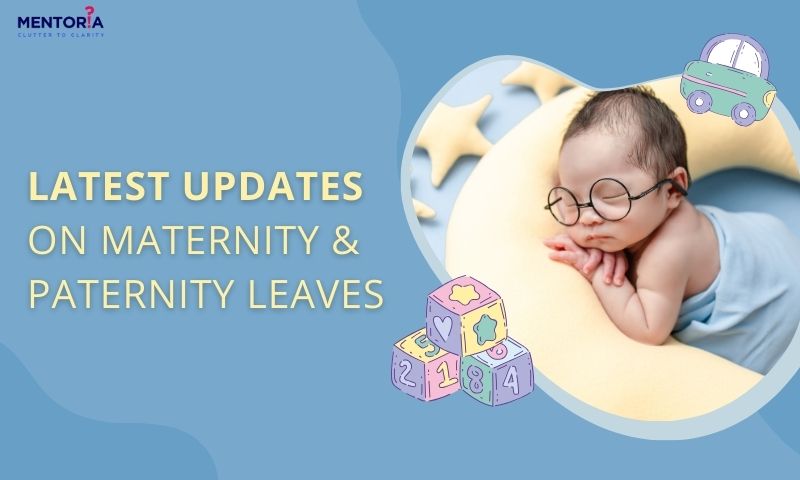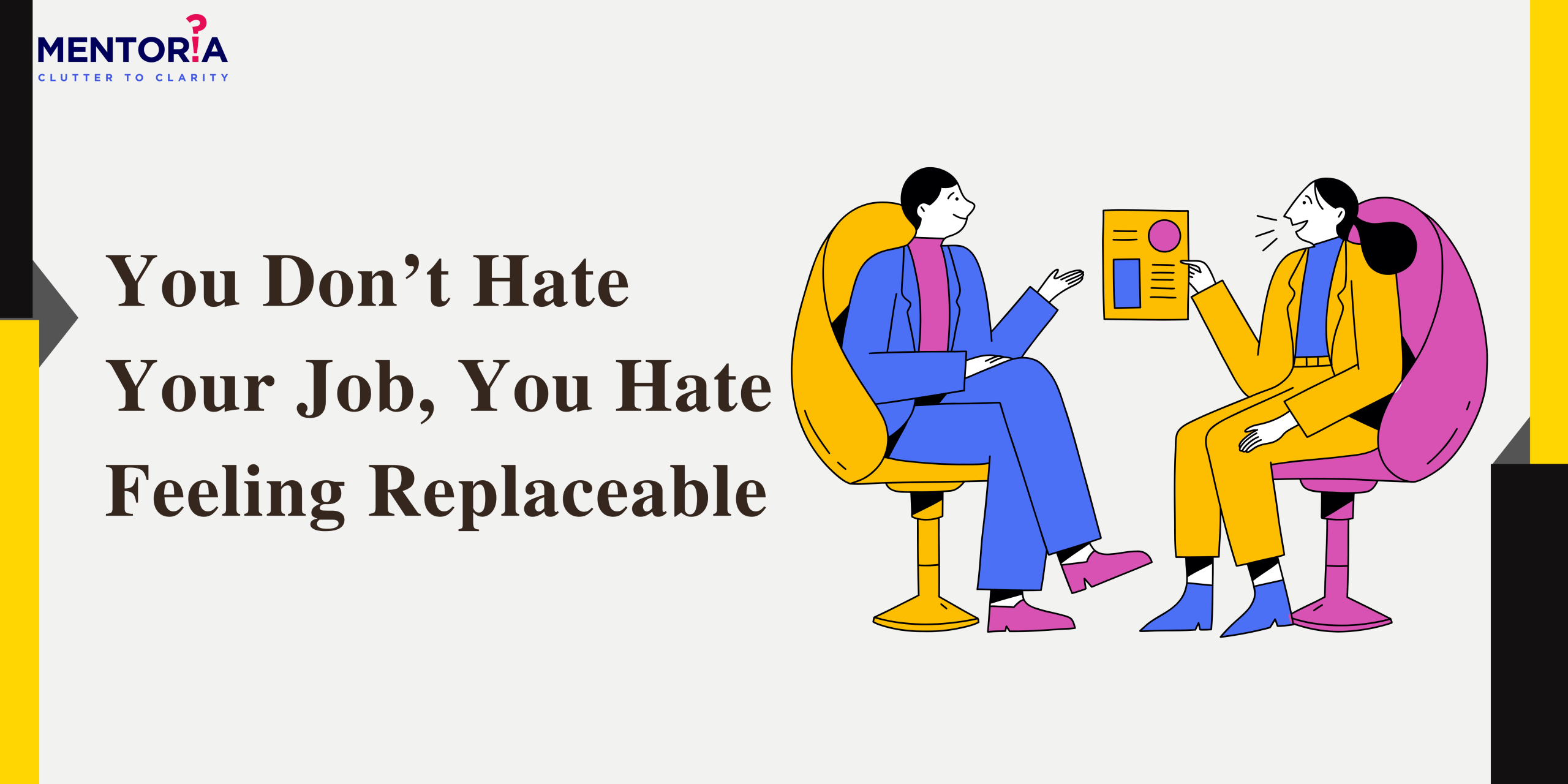Latest Updates On Maternity and Paternity Leaves

Jump to Section
You’re a new parent, juggling the demands of a newborn with your job responsibilities. Going through sleepless nights and countless diaper changes, having sufficient maternity or paternity leave can truly be a game-changer.
In recent years, there have been significant updates in maternity and paternity leave policies around the world. From extended leave durations to more inclusive policies for adoptive and LGBTQ+ parents, companies are recognising the importance of supporting employees during this crucial time.
In this article, we’ll explore the latest updates on maternity and paternity leave, highlighting the innovative approaches some companies are taking to ensure their employees can balance work and family life. Let’s dive in and see how these changes are impacting the modern workforce.
Recent Trends And Changes In Maternity/Paternity Leaves Policies In India
In India, there have been several recent trends and changes in maternity and paternity leave policies. Here are some key points:
- Increase duration of maternity leave: The Maternity Benefit (Amendment) Act, of 2017, increased the duration of maternity leave from 12 weeks to 26 weeks for women in all establishments with 10 or more employees.
- Additional benefits for adopting mothers: The amended act also introduced 12 weeks of maternity leave for adopting mothers and commissioning mothers (mothers who use a surrogate to carry their child).
- Paternity leave: While India doesn’t have a law mandating paternity leave, some forward-thinking companies are taking the initiative to offer it. For instance, companies like Flipkart, Godrej, and Microsoft India are setting an example by providing 15 days of paternity leave to their employees. This trend shows a positive shift towards supporting new fathers in the workforce.
- Work from home options: During the COVID-19 pandemic, several companies have embraced remote work, offering greater flexibility to employees, including new parents. Companies like Google, IBM, and TCS have implemented work-from-home policies, allowing employees to balance their work and family responsibilities more effectively.
- Focus on employee well-being: Companies are increasingly recognising the importance of supporting new parents’ mental and physical health. Some organisations like Accenture, IBM India, Deloitte, ICICI Bank, Ernst & Young, Mindtree, etc offer counselling services or support groups for new parents
- Gender-neutral policies: Some companies like Netflix, Zomato, etc are moving towards gender-neutral parental leave policies, allowing both parents to take equal time off, irrespective of gender.
These trends indicate a positive shift towards more inclusive and supportive parental leave policies in India, aiming to create a better work-life balance for employees.
Maternity Leave Is A Fundamental Human Right: Himachal Pradesh High Court
Legal Foundation
- The Indian Constitution safeguards fundamental rights such as the right to equality (Article 14), the right against discrimination (Article 15), and the right to life and personal liberty (Article 21).
- Additionally, Article 42 of the Directive Principles of State Policy mandates the state to ensure fair working conditions and maternity benefits.
Maternity Leave As A Basic Right
- Maternity leave is recognised as a basic human right crucial for the health and well-being of both the mother and the child.
- Refusal of maternity leave can result in gender discrimination at the workplace and violate women’s entitlement to a safe and healthy pregnancy.
Legal Precedents
- The Himachal Pradesh High Court’s decision is consistent with past rulings and legal precedents that have acknowledged maternity leave as a fundamental right.
- For instance, in the case of Municipal Corporation of Delhi vs. Female Workers (Muster Roll), the Supreme Court of India affirmed maternity leave as a fundamental right under Article 42 of the Constitution.
Impact On Workplace Regulations
- The ruling underscores the significance of aligning workplace policies with constitutional principles and global standards concerning maternity rights.
- Employers must grant maternity leave to female employees and ensure they are not subjected to discrimination based on pregnancy or maternity.
Illustrations Of Maternity Leave Regulations
- The Maternity Benefit Act, of 1961 in India mandates maternity leave of up to 26 weeks for women employed in establishments with 10 or more workers.
- Several forward-thinking companies surpass legal obligations by providing additional benefits beyond the statutory requirements.
Conclusion
- The Himachal Pradesh High Court’s ruling reaffirms the status of maternity leave as a fundamental human right and highlights the need for society and employers to recognise and respect the rights of women during pregnancy and childbirth.
- This ruling serves as a reminder to policymakers, employers, and society as a whole to uphold women’s rights and ensure gender equality in all spheres of life.
Paternity Leave In India
Paternity leave is a special time off given to fathers who work for a company. It allows them to take paid leave from work after their child is born or adopted. During this period, fathers can take care of their new baby and support their partner. It’s a way for companies to help fathers bond with their newborns and take on caregiving responsibilities.
Laws In India
In India, the rules for paternity leave are outlined in the Central Civil Services (Leave) Rule 551 (A), 1972. These rules apply to male employees, especially those working for the government.
According to these rules, eligible male employees can take a leave of 15 days within six months of their child’s birth or adoption. To qualify, an employee must have worked for the organisation for at least 80 days in the 12 months before the expected delivery or adoption date.
During this leave, the employee receives full wages. These rules aim to support male employees in taking care of their newborn or adopted child. It also includes
- A male employee with fewer than two children can take paternity leave for 15 days. This leave can start 15 days before the baby is born and can be taken up to 6 months after the birth.
- If the employee doesn’t use the paternity leave during this time, it will be considered expired and cannot be used later.
Modern Paternity Leave Policies in India: A Growing Trend
In India, government employees typically receive 15 days of paternity leave, but there is no official policy for those in the private sector. However, many companies are adopting progressive approaches. For instance, new-age companies like Meesho, Twilio, Flipkart, Razorpay, and Okcredit are leading the way by offering longer paternity leaves, sometimes up to 30 weeks. This shift is becoming more common across various industries.
Companies With Great Parental Leave Policies In India
Here are some companies in India with excellent parental leave policies:
- Microsoft India: Microsoft gives new mothers 20 weeks of paid maternity leave and fathers 12 weeks of paternity leave. They also support adoption and surrogacy leave.
- Flipkart: At Flipkart, new mothers get six months of paid maternity leave and flexible return options. They also offer paternity leave and help for new fathers.
- Accenture: Accenture offers 26 weeks of paid maternity leave and one week of paternity leave. They also provide flexible work arrangements for new parents.
- Tata Group: Tata Sons provides 28 weeks of paid maternity leave and two weeks of paternity leave. They also have leave options for adoption and surrogacy.
- Zomato: Zomato offers 26 weeks of paid parental leave for both men and women. They also support flexible work schedules for new parents.
These companies are examples of organisations in India that have implemented generous parental leave policies to support their employees during the important time of welcoming a new child.
5 Countries With Best Maternity/Paternity Leave Policies
- Bulgaria: In Bulgaria, new parents can enjoy a generous 410 days of paid leave. During this time, maternity leave covers 90% of the employee’s salary through Social Security. After 410 days, until the child turns two years old, the employee receives monthly compensation equivalent to the minimum monthly salary, paid by social security.
- Norway: Norway offers new mothers a flexible maternity leave policy. They have the option to take a maximum of 59 weeks off with 80% of their salary paid, or they can choose to take 49 weeks off with full pay. Fathers also have the opportunity to take up to 10 weeks of leave, or they can decide not to take any leave based on the mother’s income.
- Sweden: In Sweden, parents have the opportunity to enjoy a generous parental leave policy. They can collectively take up to 480 days off, receiving 80% of their regular wages during this time. What sets Sweden apart is that they understand the challenges of having multiple births, so they grant an extra 180 days for each additional child. This means that each parent is entitled to a full 240 days of paid parental leave, making a total of 480 days, and they have the freedom to divide this leave as they see fit. Moreover, fathers are given a special treat of 90 paid paternity days, exclusively designed to foster a strong bond with their little ones.
- Japan: In Japan, fathers have the opportunity to take an amazing 12 months of paternity leave, which is different from the leave given to mothers. The government’s social security programme ensures that this leave is paid.
- Iceland: In Iceland, the latest legislation for 2021 has expanded the combined maternity and paternity leave to a total of 12 months. This leave is divided equally between both parents, providing a fair arrangement. Additionally, they have the option to transfer one month of leave to the other parent, allowing for flexibility. Throughout the entire leave period, individuals receive 80% of their average salary as payment.
Case Studies
Employers must understand their obligations when an employee shares news of her pregnancy. Employment laws safeguard pregnant employees and those on maternity leave from unfair treatment due to their pregnancy. To ensure compliance, employers should establish a comprehensive maternity policy and revisit it when an employee discloses their pregnancy. If any doubts or concerns arise, it’s wise to consult with professionals before making any decisions that could potentially be viewed as discriminatory.
Let’s break this down with two case studies.
Case Study 1: Deloitte’s Enhanced Maternity Leave Policy
- Background: Deloitte offers additional support for expectant mothers beyond the standard 26-week maternity leave. This includes the option to extend leave and work from home, subject to approval.
- Implementation: Mothers can request flexible work arrangements, like reduced hours or days, or flexible hours and work from home options for a limited time. The company also provides counselling services for expectant mothers, their spouses, and managers.
- Result: These measures aim to make the transition smoother for mothers and their children. The company offers ex-gratia maternity support for travel in the last month before maternity leave and provides options for day care near the office or support for a chosen day care facility.
Case Study 2: Netflix’s Unlimited Maternity And Paternity Leave
- Background: In 2015, Netflix announced a new policy offering unlimited maternity and paternity leave for the first year after a child’s birth or adoption.
- Implementation: Netflix’s policy allowed new parents to take as much time off as they needed during the first year, with full pay. This policy aimed to support employees during the crucial early months of parenthood.
- Results: The unlimited leave policy at Netflix was well-received and led to positive outcomes for the company. It improved employee morale and loyalty, and it was seen as a competitive advantage in attracting and retaining talent.
Improving Parental Leave Policies
Transparent Policies
- Clearly outline maternity and paternity leave policies in the employee handbook or a dedicated policy document.
- Specify eligibility criteria, such as length of service requirements, for accessing leave benefits.
- Clearly explain the process for requesting leave, including any documentation required.
- Provide information on the benefits available during leave, such as salary continuation, healthcare coverage, and job security.
Flexible Options
- Offer flexible scheduling options for parents returning to work, such as part-time or remote work arrangements.
- Allow for the use of accrued paid time off (e.g., sick leave, vacation days) to supplement maternity or paternity leave.
- Consider phased returns to work, where employees gradually increase their work hours over a specified period.
Creating A Supportive Atmosphere
- Make sure new parents have access to helpful resources like lactation rooms, child care assistance programmes, and parenting classes.
- Provide employee assistance programmes (EAPs) or counselling services to assist employees in navigating the demands of work and parenthood.
- Cultivate a culture that appreciates work-life balance and encourages employees to effectively handle their personal and professional obligations.
Employee Education
- Host workshops for managers and supervisors to learn how to assist employees during maternity or paternity leave.
- Educate all staff members on the significance of parental leave and the entitlements of new parents at work.
- Share the advantages of parental leave for both employees and the company, like enhanced morale and employee retention.
Periodic Assessments
- Conduct routine assessments of maternity and paternity leave policies to guarantee compliance with existing laws and regulations.
- Gather input from employees who have utilised maternity or paternity leave to pinpoint areas that can be enhanced.
- Compare your policies with industry norms periodically to maintain competitiveness and appeal to prospective hires.
Empowering Parents In The Workplace
The changing landscape of maternity and paternity leave policies shows a greater acknowledgment of the significance of backing working parents. Businesses that give importance to these policies not only help their staff but also establish a more welcoming and supportive workplace. With ongoing improvements in parental leave policies, it’s evident that the welfare of employees and their families is increasingly important for companies globally. Embracing these adjustments allows companies to draw in and keep top-notch employees while promoting a culture of compassion and comprehension.
Check out our master workshops designed for working parents at Mentoria. Give us a call to chat with our mentors and select the guidance plan that works best for you and your child. Mentoria offers a variety of options with 3 streams, 850+ courses, and helps you find what suits you best. If you’re a parent looking to empower your child to think independently, we also provide workshops for employees and career guidance for their children. Don’t hesitate, reach out to us today!










